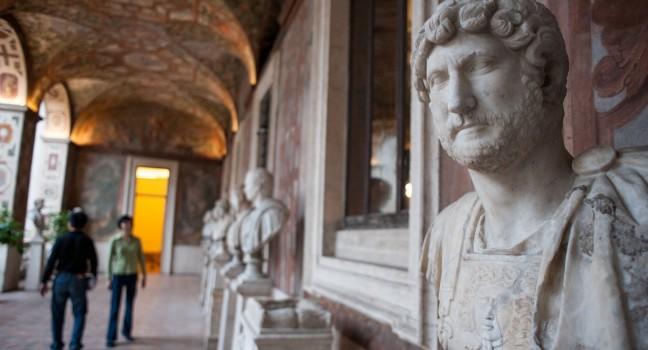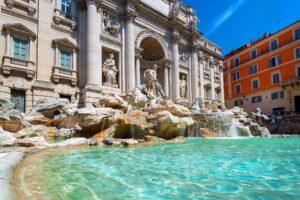Fodor's Expert Review Palazzo Altemps

Containing some of the world's finest ancient Roman statues, Palazzo Altemps is part of the Museo Nazionale Romano. The palace's sober exterior belies a magnificence that appears as soon as you walk into the majestic courtyard, studded with statues and covered in part by a retractable awning. The restored interior hints at the Roman lifestyle of the 16th–18th centuries while showcasing the most illustrious pieces from the Museo Nazionale, including the collection of the Ludovisi noble family.
In the frescoed salons you can see the Galata Suicida, a poignant sculptural work portraying a barbarian warrior who chooses death for himself and his wife, rather than humiliation by the enemy. Another highlight is the large Ludovisi sarcophagus, magnificently carved from marble. In a place of honor is the Ludovisi Throne, which shows a goddess emerging from the sea and being helped by her acolytes. For centuries this was heralded as one of the most sublime Greek sculptures,... READ MORE
Containing some of the world's finest ancient Roman statues, Palazzo Altemps is part of the Museo Nazionale Romano. The palace's sober exterior belies a magnificence that appears as soon as you walk into the majestic courtyard, studded with statues and covered in part by a retractable awning. The restored interior hints at the Roman lifestyle of the 16th–18th centuries while showcasing the most illustrious pieces from the Museo Nazionale, including the collection of the Ludovisi noble family.
In the frescoed salons you can see the Galata Suicida, a poignant sculptural work portraying a barbarian warrior who chooses death for himself and his wife, rather than humiliation by the enemy. Another highlight is the large Ludovisi sarcophagus, magnificently carved from marble. In a place of honor is the Ludovisi Throne, which shows a goddess emerging from the sea and being helped by her acolytes. For centuries this was heralded as one of the most sublime Greek sculptures, but, today, at least one authoritative art historian considers it a colossally overrated fake. Look for the framed explanations of the exhibits that detail (in English) how and exactly where Renaissance sculptors, Bernini among them, added missing pieces to the classical works.
In the lavishly frescoed loggia stand busts of the Caesars. In the wing once occupied by early-20th-century poet Gabriele d'Annunzio (who married into the Altemps family), three rooms host the museum's Egyptian collection.
READ LESS








